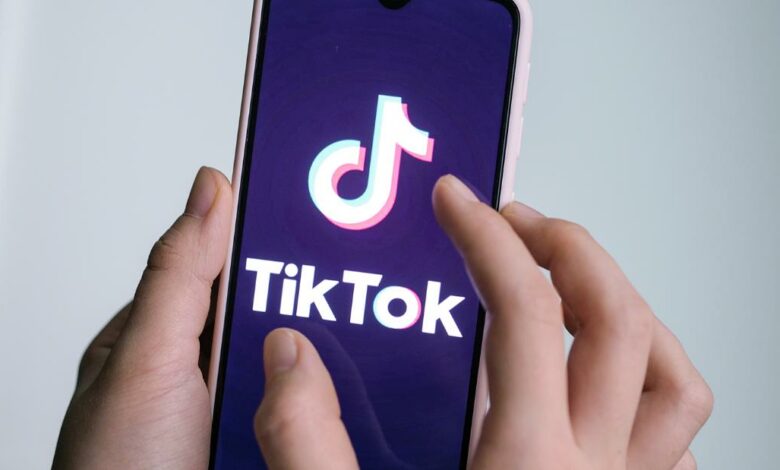
On the first trading day of 2022, Apple hit a new milestone for the tech industry: the iPhone maker became the first publicly traded company to hit a $3 trillion market cap, with Microsoft and Google not far behind. As eye-popping as that valuation was, there were headlines speculating about how long it would be before Apple and its rivals topped $5 trillion.
The tech industry, already dominant, only seemed destined to grow even bigger at the start of this year. The spread of the Omicron variant suggested a continued pandemic-fueled demand for digital goods and services, which had buoyed many tech companies. Near 0% interest rates meant startups still had easy access to the funding that had fueled their high valuations and risky ventures.
But the year is ending on a much different note. A perfect storm of factors have forced a dizzying reality check for the once high-flying tech sector, making it one of the biggest losers of 2022.
Over the course of the year, pandemic-era demand for many tech tools shifted; inflation soared; interest rates rose and fears of a looming recession weighed on consumer and advertiser spending, the latter of which makes up the core business of many household names in tech.
The result was a bloodbath unlike anything the tech industry has seen in the past decade. Tech stocks plunged, amid a broader market downturn. Tens of thousands of rank-and-file tech workers lost their livelihoods amid mass layoffs, both at tech giants like Amazon and Facebook-parent Meta as well as at smaller tech companies like Lyft, Peloton and Stripe. The crypto world all but imploded. And an entire industry known for burning cash on ambitious moonshots instead started shutting down projects and announcing cost-cutting efforts.
Even the title of world’s richest man, which previously belonged to serial tech founder Elon Musk, ended up passing to Bernard Arnault, the chairman of French luxury goods giant LVMH, after Musk’s chaotic purchase of Twitter appeared to sour investors on his car company, Tesla.
The sharp shift in sentiment not only removed the air of invincibility for the industry; it also exposed some of its underlying myths. For years, Silicon Valley has held up its founders as visionaries who can see far into the future. But suddenly, many of its most prominent founders had to admit a harsh truth: they couldn’t even predict two years ahead.
As Facebook founder Mark Zuckerberg put it in a memo to staff last month announcing the company would cut 11,000 employees: “Unfortunately, this did not play out the way I expected.”
He was far from the only one in the industry caught off guard.
Silicon Valley’s rude awakening
When the pandemic upended the broader economy in early 2020, tech firms only seemed to grow bigger and more powerful as people were forced to live out their lives online. Facebook (now Meta) could afford to nearly double its headcount and make multi-billion-dollar bets on a future version of the internet dubbed the metaverse. Amazon similarly went on a hiring spree and doubled its fulfilment center footprint to meet the surge in online shopping demand.
“At the start of Covid, the world rapidly moved online and the surge of e-commerce led to outsized revenue growth,” Zuckerberg wrote in his memo to staff last month. “Many people predicted this would be a permanent acceleration that would continue even after the pandemic ended. I did too, so I made the decision to significantly increase our investments.”
Then the market shifted.

“People are terrible at predicting the future, and we always think that what’s happening now is going to happen forever,” Angela Lee, a professor at Columbia Business School who teaches venture capital, leadership, and strategy courses, told CNN. “But the reality is that the pandemic was a black swan event, and none of us knew what would happen going forward.”
One by one, the visionaries of Silicon Valley issued mea culpas. The founders of Stripe, Twitter and Facebook each took turns admitting they either grew their companies too quickly or were overly optimistic about pandemic-fueled growth in their sector.
“We were much too optimistic about the internet economy’s near-term growth in 2022 and 2023 and underestimated both the likelihood and impact of a broader slowdown,” Patrick Collison, CEO of Stripe, wrote in a note to employees last month announcing 14% of the staff would be cut.
It wasn’t only a shift in consumers living their lives offline again that hurt the industry. The tech sector was particularly pummeled by the impacts of rising interest rates this year. Silicon Valley as a whole is arguably more sensitive to interest rate hikes than other industries, as many tech companies rely on easy access to funding to pursue their ambitious projects, typically before even turning a profit.
In a move to tame inflation, the Fed approved seven-straight rate hikes in 2022. Since the beginning of the year, the tech-heavy Nasdaq index shed more than 30% as of Dec. 21. By comparison, the Nasdaq soared more than 40% in 2020 and a further 20% in 2021. And the S&P 500’s Information Technology sector shed more than 28% this year through Dec. 21, considerably higher than the broader S&P 500’s fall of just 19% over that same period.
Apple’s market cap now hovers just above $2 trillion. Amazon’s stock has shed some 50% year to date. And shares for Meta have been hit even harder, losing nearly two thirds of their value in 2022. Once a trillion-dollar business last year, Meta has since seen its market value drop below companies like Home Depot.
‘Return to sanity’
The shift in sentiment for tech has also hit the next generation of companies that aspire to be household names.
Global venture funding hit a nine quarter low of $74.5 billion in the third quarter of 2022, according to data from analytics firm CB Insights. This marked the largest quarterly percentage drop in a decade (34%), and a 58% decline from the investment peak reached in the fourth quarter of 2021.
In another sign of how this played out in the startup world: more than two new unicorns (startups valued at $1 billion or more) were born on average per business day in 2021, according separate data from CB Insights. That rate dropped to a pace of less than one new unicorn for every other business day in the third quarter of 2022, per CB Insights’ most recent analysis, the lowest since the first quarter of 2020.
Lee, who is also the founder of investing network 37 Angels, said when she met with tech founders this year, “I have said these words, which is, ‘I might have done this deal last year, but I am not going to do it now.’ And I’ve heard a lot of other people say that as well.”
While the belt tightening might be painful for tech founders, Lee says she views it as a good thing for the tech industry overall. Many industry insiders have long said these sorts of corrections can help weed out some of the excess in the market and ensure more financially viable companies are the ones that survive.
“Right now, there are like a lot of headlines that are just like, ‘The sky is falling, the end is near,’ and the way that I describe it is more of like a return to normalcy,” said Lee, noting that most charts tracking VC spending (from the number of mega-rounds to the number of IPOs) had a huge hump in 2020 and 2021 when interest rates were low, and now these charts are starting to look like how they did in 2019.
“I would just call it like a ‘return to sanity,’ versus like, ‘the sky is falling,’” Lee said. “I do not think venture is cratering, or the tech industry is cratering as an industry.”
But for now, at least, there appears to be no end in sight to the pain for Silicon Valley and those who work in it.
In his own memo acknowledging job cuts at Amazon, CEO Andy Jassy said the layoffs at Amazon, reported to total some 10,000 roles, would continue into 2023. At a conference last month, he called the earlier hiring spree a “lesson” for everybody.




